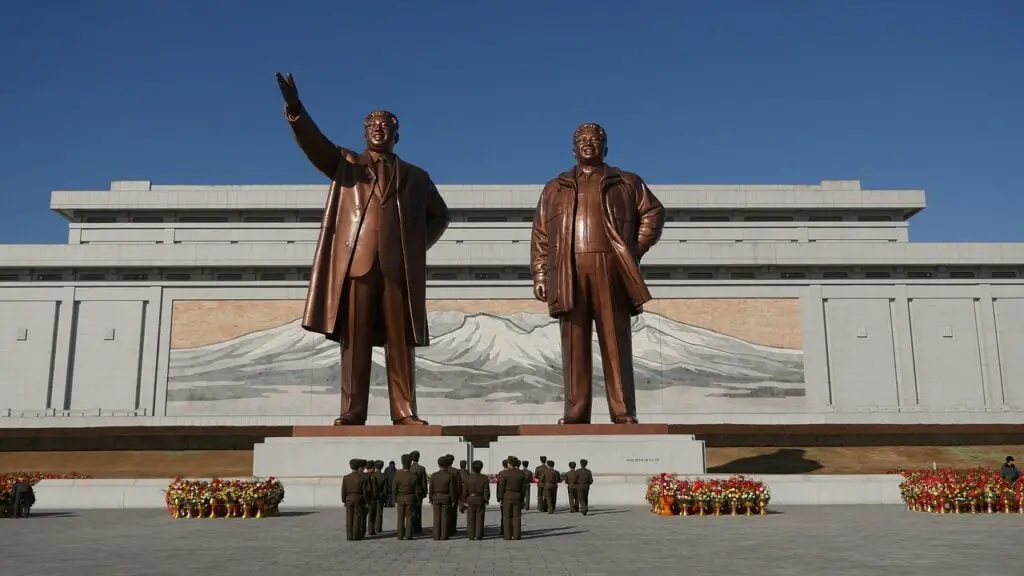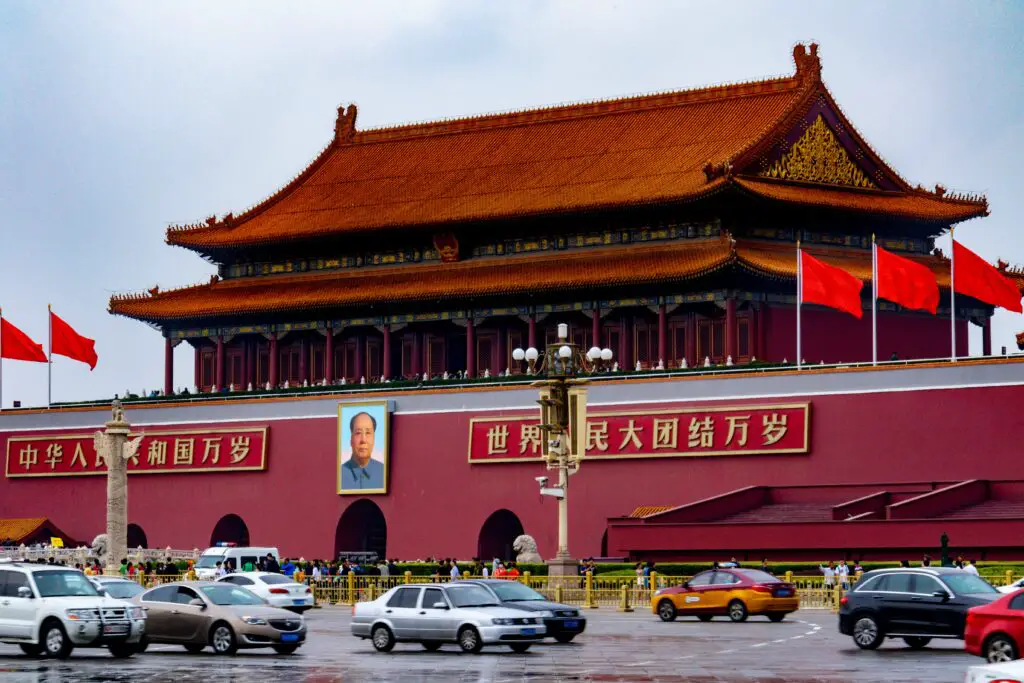A command economy (or planned economy) is a type of economic system in which the government plans and directs economic activities such as the factors of production and also prices of goods and services. Let us discuss some command economy examples in terms of their characteristics, pros and cons, and how these countries are faring.
To have a better understanding of this type of economic system, we will give some examples of command economies that once existed but might have changed for some reasons, which we will also discuss, as well as the modern command economy examples. Some countries might have started as command economies but later switch to other forms such as communism or mixed economies (for example, communist command economy).
See also: Free Market Economy vs Regulated Market – Differences and Similarities
What is a command economy?
A command economy is an economic system characterized by the government making all economic decisions and regulating the means of production. The government owns and controls the major industries, and decides what goods and services will be produced, how they will be produced, and for whom they will be produced. This is in contrast to a market economy, where the decisions of production and distribution are made by individuals and private companies.

The activity in a command economy is planned and organized by a central government and the prices are determined by the government as well.
A command economy tends to exist under a centralized government or authoritarian regime, where the government has a great deal of control over the economy and society. In a command economy, the government makes all economic decisions and regulates the means of production, distribution, and prices.
This type of system is often associated with totalitarian or socialist governments, where the state plays a large role in directing the economy and society. The government owns and controls the major industries, and decides what goods and services will be produced, how they will be produced, and for whom they will be produced.
One thing to note about the examples of command economy countries mentioned here is that not all the countries have all the characteristics of a command economy; for example, one country may have prices set by the government whereas another may not set prices but will instead decide on the allocation of resources such as land, capital, etc (factors of production).
One of the goals of a command economy is to avoid the concentration of wealth and power in the hands of a few people who may own the capital or other factors of production.
What is the goal of a command economy?
The most important goal of a command economy is to ensure the fair distribution and allocation of resources. This is aimed at reducing income inequality by redistributing wealth and resources through government policies and programs.

What is one way a command economy affects the lives of private citizens?
One way a command economy can affect the lives of private citizens is by limiting their economic freedom and opportunities because the government controls all factors of production and also set prices. As a result, private citizens may have very limited opportunities to start their own businesses, invest in the economy, or trade goods and services with others.
Command Economy Examples
- Cuba
- East Germany (The German Democratic Republic)
- Former Soviet Union
- China
- North Korea
- Belarus
- Vietnam
- Iran
- Libya
All the command economy examples mentioned above would be discussed by looking at their:
- Characteristics
- The goals each country aims to achieve
- The disadvantages and advantages of a command economic system in these countries
- What is prohibited in each of these command economy examples?
- The impact on the lives of private citizens
- Whether or not they were able to achieve the goals for which they chose the command economic system.
Examples of Command Economy Countries
Historically, many communist countries as well as socialist countries have had command economies. Some examples include the former Soviet Union, China under Mao Zedong, and Cuba under Fidel Castro. Currently, North Korea is considered to have a command economy as well.
It’s worth noting that while these countries are considered examples of command economies, some of them have undergone significant economic reforms and now have mixed economies with elements of both command and market economies.
East Germany (The German Democratic Republic)
In this command economy example, the government’s goal was to take charge of all private property and abolish any form of laissez capitalism in order to compete and outpace the Western counterpart (West Germany) that practice capitalism. In 1945, the German Democratic government began taking over companies and real estate from private owners in order to transform the country into a centrally planned economy; this was fully transformed in 1949.
The government prohibited the citizens from leaving the country by building walls and barriers; it also prevented them from demanding internal change through constant policing and monitoring of people’s behavior. This shows for a command economy to work, it requires dictatorship and authoritarian rule as those who resisted were arrested.
The East German government introduced multiple 5-year plans, such as the nationalization of all industrial concerns as well as the collectivization of agricultural enterprises, so as to help achieve economic prosperity.
With all the efforts of the government to increase industrialization and production output, it was never a success as production declined continuously. This is one of the disadvantages of the command economy (low productivity) that affected Eastern Germany. However, unemployment in this command economy country was low or absent.
See also: European Industrial Revolution
The Soviet Union is an example of a command economy
The Soviet Union, which existed from 1922 to 1991, had a command economy that was based on the principles of socialism and centralized planning. The government controlled all aspects of the economy, including the means of production, distribution, and prices. The goal of the Soviet command economy was to achieve rapid industrialization and economic growth, but in practice, it led to inefficiencies and shortages.
What was the goal of the Soviet Union as an example of a command economy country?
Being a centrally planned economy, the government, whose goal was to allocate resources efficiently in order to achieve rapid industrialization, failed to do so, and there was little incentive for workers to be productive, as they did not receive higher wages for working harder. As a result, the Soviet Union’s economy stagnated and was unable to keep up with the more capitalist economies of the West. It shows the goal of a command economy which was supposed to birth rapid industrialization failed in what was its primary role.
How did the Soviet Union as an example of a command economy country affect the lives of private citizens?
Although the Soviet Union as an example of a command economy, was not successful in growing the economy, it did successfully provide for the country’s citizens in terms of basic needs such as food, shelter, and healthcare.
China under Mao – an example of a command economy
Another command economy country is China under Mao Zedong, who ruled from 1949 to 1976. This command economy example was based on the principles of socialism and self-sufficiency. The government controlled all aspects of the economy, including the means of production, distribution, and prices. Mao’s economic policies led to the collectivization of agriculture, which resulted in food shortages and famine. The cultural revolution also disrupted the economy severely.

Since the reform and opening up began in 1978, China has adopted a mixed economic system and developed into a global power; in today’s modern society, China has been making 5-year plans in order to improve its citizens. However, the Communist Party of China (CPC) continues to maintain tight control over key industries and economic activity, with the help of state-owned enterprises (SOEs), which account for a significant portion of GDP.
China as an example of a command economy country intervenes heavily in the affairs of state-owned enterprises through financing, ownership structure, pricing decisions, investment plans, personnel appointments, etc. In addition, all land is owned by the state and cannot be bought or sold. This gives the government considerable control over development projects.
The banking sector is also tightly controlled by the government in order to keep lending rates low and support favored sectors or projects.
The advantage of this command economy country is that it has been successful in lifting millions of people out of poverty but the income inequality is still high, and there are concerns about environmental sustainability. The government is gradually moving towards more market-based reforms, but the transition has been slow and difficult.
Command Economy Example – the case of Cuba
Cuba is a good example of a command economic country in which the government centrally plans and owns most of the country’s industries and land; even the labor force belongs to the government, this means before a company can hire an employee, it must first pay the government before the government pays the employee. This means a company cannot directly pay an employee.
This example of a command economy system was put in place after the Cuban Revolution in 1959 after Fidel Castro overthrew the government. His economic policies led to the nationalization of private property and the collectivization of agriculture.
The goal of this command economy country is to effectively meet the needs of the people. They want to provide everyone with equal access to goods and services, eliminate poverty, and reduce inequality. In theory, a command economy can be a very efficient way to run a country. However, in practice, it often doesn’t work as well as intended.
Cuba’s command economy has led to some successes, such as a high literacy rate and a low infant mortality rate; because it provides free healthcare services to its citizens. However, the economy is not very diversified, and Cubans have little opportunity to become entrepreneurs. As a result, Cuba’s economy became heavily dependent on foreign aid and tourism.
One of the biggest problems with this command economy country is that there is no incentive for businesses to be efficient or innovative. Without competition, businesses have no reason to improve their products or services or find new ways to produce them more cheaply. As a result, this and many other examples of command economies are not as productive as they could be.
However, despite its challenges, Cuba has been relatively successful in meeting its goals of eliminating poverty and providing basic necessities for its citizens. But it has struggled to create enough jobs and grow its economy overall; in recent years, the Cuban government has begun to liberalize its economy somewhat, opening up more sectors to private enterprise and expanding opportunities for foreign investment; though this has been slow. However, the Cuban government still maintains a large degree of control over the country’s economic activity.
North Korea as an example of a command economy
North Korea is a typical command economy example in modern-day society; in fact, it is one of the world’s remaining communist states. This command economy country is based on the principles of communism and central planning. The government controls all aspects of the economy, including the means of production, distribution, the financial sector, and prices of goods. It also controls access to information and strictly regulates the activities of its citizens.
As a command economy example, the North Korean government sets prices for residential homes and makes them affordably low to the citizens because the government owns all houses in the country. Not only does the government own the homes, but it also assigns to individuals where they have to live and only for a specific period of time; which means they can be relocated to another area. Though in recent years, North Korea has begun to slowly open up its economy to more private enterprise and foreign investment, it remains to be seen whether these changes will be enough to improve living standards for the country’s citizens.
Also, health care services and education are made to be free or the cost is very minimal. These are some of the benefits of command economies.
As a command economy country, North Korea also owns all land and natural resources, and it also runs all key industries such as transportation, energy, communications, and manufacturing. It sets production goals for these industries and tells companies what to produce, how much to produce, and where to sell their products. With such tight control over the economy, the government can theoretically make decisions that are in the best interests of society as a whole rather than being motivated by profits.
While the North Korean government claims that its centrally planned economy is necessary to protect the country’s sovereignty and independence, critics argue that it has led to widespread poverty and repression.
The economy is heavily dependent on exports of minerals and agricultural products and is facing difficulties due to the sanctions imposed by the international community.
It’s worth noting that while these countries have historically been considered command economies examples, most of them today have undergone significant economic reforms and have moved from being pure command economies towards mixed economies with elements of both command and market economies in recent years.
Belarus command economy example
Belarus is today still a command economy country because the government owns and controls most of the businesses in the country, up to 80%. The Belarusian government also has large control over the financial sector as well, with the government owning 75% of the banks in the country.
Mixed economies that are largely command economy examples
Other countries such as Russia, Vietnam, Iran, and Libya are mixed economies with large aspects of command economies. The extent to which citizens can own private property is limited.
Some countries may switch to a command economy temporarily
Some countries may not be true examples of command economies; they could be practicing a different type of economic system, but in certain conditions, these countries may switch temporarily to command economies in certain sectors of their economy such as during a crisis or war.
USA
An example is the United States of America which is an example of a free-market economy but switched to a command economy during World War II and COVID-19.
During the COVID-19 pandemic, the USA used the Defense Production Act to force the production of vaccines and supplies used for conducting medical tests. The goal of the defense production act is to promote national defense.
Other actions of the United States government that is the same as a command economy are the provision of subsidies and welfare programs. For example, in 2018, the Trump administration provided tax cuts for producers of coal and oil.
What is the most famous example of a command economy?
The Soviet Union under Joseph Stalin is considered one of the most famous examples of a command economy. Stalin implemented a command economy in the Soviet Union in the late 1920s and early 1930s as part of a program of rapid industrialization and collectivization of agriculture. Under Stalin’s command economy, the government controlled all aspects of the economy, including finance, agriculture, and allocation of the factors of production.
The goal of the Soviet Union command economy was to achieve rapid industrialization and economic growth, but in practice, it led to inefficiencies and shortages. It’s worth noting that the Soviet Union’s command economy was not the only example of a command economy country in history, but it is considered one of the most notable and well-known examples of command economies due to the Soviet Union’s status as a superpower during the Cold War and the significant impact it had on global economic and political systems.
Which is a modern example of a command economy country?
North Korea is currently considered a typical command economy example in today’s world, as the government controls all aspects of the economy, including the means of production, distribution, and prices. The government also controls access to information and strictly regulates the activities of its citizens.
It’s worth noting that North Korea as a command economy example is not the only country in modern times, but it is considered one of the most notable command economy examples due to its isolation from the rest of the world and the limited information available about its economic system.
Conclusion
In command economy countries, the government centrally plans and controls the production and distribution of goods and services. This type of economic system is often associated with communist countries, such as North Korea.
Command economies can have some advantages over free market economies. For example, the government can make sure that everyone has access to basic necessities like food, shelter, and healthcare. It can also invest heavily in education and infrastructure projects that might be neglected in a free market economy.
However, command economies also have some significant disadvantages. Because the government is in control of everything, there is very little room for innovation or creativity. Additionally, decision-making is often slow and inefficient, as it must go through a central authority. And finally, because there is no competition in a command economy country, businesses have no incentive to improve their products or services or to keep prices low.
Last Updated on November 2, 2023 by Nansel Nanzip BongdapNansel is a serial entrepreneur and financial expert with 7+ years as a business analyst. He has a liking for marketing which he regards as an important part of business success.
He lives in Plateau State, Nigeria with his wife, Joyce, and daughter, Anael.
